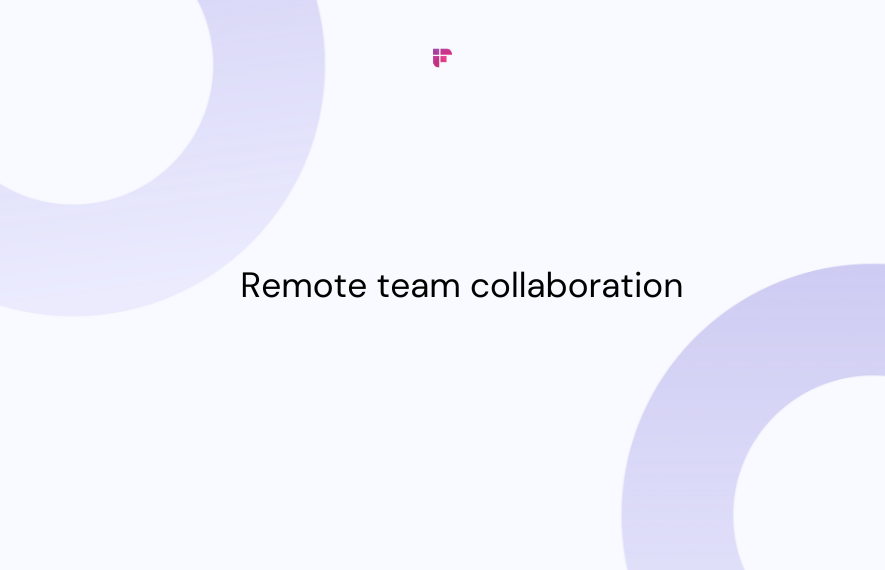The coronavirus pandemic did not just change the world’s working system; it hastened the acceptance of what was bound to become the norm for most companies, “Remote Working.” Before the COVID 19 pandemic, a significant percentage of the US population were already remote workers, 5.2% per the US Census Bureau in 2017.
Now, due to the restrictions imposed by the pandemic, more and more companies are beginning to see the advantages (increased working efficiency, positive working environment, etc.) associated with a remote working set up.
The pandemic aside, the benefits of remote working far outweigh its negatives, and with the development of technology in every passing year, understanding how to work remotely may become a deciding factor on the success of your business.
Yes, a remote working system can be beneficial; however, it is a new concept to most new businesses, and if not done correctly, could yield negative results. Hence, we’ve created this guide to help you through your remote hiring journey.
What is Remote Hiring?
Remote hiring is basically the process of employing talents that would offer their services from locations outside your geographical proximity, usually from other countries, working out of home offices, co-working spaces, etc.
We are slowly leaving the traditional nine to five age, and the lines between offices and homes are growing increasingly thin. According to remote working statistics, over 4.3 million people in the US work remotely.
But asides the obvious reason, the pandemic, why do we have such high numbers related to remote working? And why are companies planning towards remote working post-coronavirus?
For example, Facebook, Twitter, & Microsoft were amongst the first companies to send employees home when the virus spread to the US. However, they’re not planning to return first, post lockdown, with Twitter CEO, Jack Dorsey, telling his staff they could work from home if they choose to, as this would help their plan of becoming a more “distributed” workforce.
So, there we have it, the answers to our initial questions are the benefits of remote working, some of which are;
- Higher productivity
- High employee retention
- Reduction in the overall cost of running a business
- Elimination of limitations due to proximity, and most importantly,
- Access to a larger talent pool since “location” is not a factor.
Now that you know how beneficial remote hiring can be to your company let’s talk about the steps you’d follow to avoid pitfalls in your remote hiring journey.
How to Hire Remote Workers
Step 1: Prepare for Remote Hiring
Every good thing is a result of great background planning, and if you’re to hire remote workers effectively, you need to prepare, more like building the foundation.
How would you prepare for traditional hiring?
Ponder on your answer for a while, because we will need it to prepare for your remote hiring.
Remote hiring does not require a massive shift from the traditional hiring you may be accustomed to, but it does require some kind of preparation. And like every business decision, you need to be sure you’re setting up new hires for your company’s success.
Here are a few steps you should follow to prepare for your remote hiring process;
Understand your Goals and Requirements
You don’t make any business decision without setting a goal, whether it is to reach a larger audience or increase Return on Investments (ROI), you need a goal, and remote hiring is no different.
What is your goal? What is your purpose for going remote? Are you going fully remote or part-time? Or are you planning for a flexible work from home schedule.
Your answers to these questions will lead to your requirements. For example, if you’re looking to go full-time remote and start from scratch, you’d require employees with remote working experience.
Determine your Recruiting Budget
Now that you’ve set your goal and know your requirements, the next step is determining your budget. This step depends on the decisions you make on how you plan to get your job posting out there, your payout structure, allowance plan, logistics, and how you plan to manage your remote team.
Avenues for getting your jobs to potential employees are; Job boards, online job communities, for example, Upwork, social media ads, etc.
In terms of logistics, you can budget for real-life get-togethers. Miro, Zapier, and Github, full-time remote working companies, have a yearly offsite where all members of their distributed team come together. According to Miro, it helps deepen their connections and builds a collective understanding of a company’s vision and direction.
Prepare your Job Description
Part of preparing for your remote hiring is writing a detailed job description. You want your potential hires to understand the responsibility of the role fully. This is because the best candidates won’t respond to job descriptions they don’t fully understand.
To write a detailed job description, you need to fully understand the work associated with the role yourself. One way to do this is by doing the work yourself or appointing a team member. Basecamp’s co-founder Jason Fred explains how they use this method in a Reddit AMA;
“When it comes to an all-new position at the company, we like to try to do it first with the people we have so we really understand the work. If you don't understand the work, it's really hard to evaluate someone's abilities. Before we hired our first customer service person, I did just about all the customer service for two years. Before we hired an office manager, David and I mostly split the duties. That really helped us know who would be good when we started talking to people about the job.”
Choose global applications
To ensure maximum productivity from your remote team, you need to choose applications that would be accessible in countries you’re looking to hire from. This will make your employees’ jobs easier and allow fluid communication.
To run a remote team, you need to consider different categories, such as;
- Video conferencing
- Chat
- Project management
- File management, etc.
Step 2: Choose candidates with the right traits for your job
Now that you’ve set up your plan and ready to move forward, the next step involves answering the question of what qualities I look for in candidates?
Obviously, the first qualities you’ll be looking out for are related to the role you’re looking to fill. For example, for the role of customer service personnel, the obvious qualities to look out for would be; Time management skills, patience, knowledge of products and services, etc.
However, for remote hiring, there are remote working skills you should look out for when shortlisting candidates:

Great communication skills
You must look for candidates with great communication skills because remote working involves a lot of communication, and you want workers who are comfortable expressing themselves with words.
This can be evident from the first couple of interactions, candidate’s cover letter, how candidates present their skills, including all the requested enclosures. For example, if candidates do not follow all the job posting instructions, it could be a sign that they won’t pay attention to details.
Strong work ethic
While remote working comes with flexible working hours, you’ll want your employees to get things done. One way to discover a candidate’s work ethic is through previous work history like the challenges they faced in a similar role and how they handled or persevered to overcome them.
Ability to work with little or no supervision
While you can make provisions for constant feedback, for high work efficiency, you’ll want candidates who can work without babysitting. Candidates that are good at planning and budgeting their time. Because working from home requires a degree of discipline and commitment.
How to Attract the Best Talent for Remote Hiring?
While remote hiring offers you access to a larger pool of talents, as mentioned earlier, you need to be doing something right to attract the best talents. What are the things you can do to attract them?
Here are a few tips:
Make information about your remote employing process and support readily available
To attract remote working talents, you need to make them aware of your remote working opportunities, your flexible working environment, your company’s culture that’s all about supporting your remote employees.
One way to do this is to make this information clear in your candidate enrolling journey.
A good example to look at is DigitalOcean.
Starting from their careers page, DigitalOcean highlights their remote-friendly culture, mentioning areas where they support their employees. They went further to list the benefits of working with DigitalOCean, in the “Benefits” section.
In the “current openings” section on their careers page, DigitalOcean clearly lists out their openings and an interview guide at the bottom of the page to give clients an idea on how to prepare for their interview.
Show candidates that what they’re presented with during the recruiting process is the reality.
Remote workers, more than anyone else, worry about feeling included. Therefore it is essential that you only present, during your remote hiring process, the reality of your company’s operation.
DigitalOcean does this by incorporating tools and processes that, to some extent, imitates the processes in place for their onsite employees. For example, they offer free meals every day during their recruitment process, as stated in the “Benefits” section of their careers page, and they make provisions for the same support for their remote employees.
How to conduct a remote interview
Now that you’ve shortlisted candidates whose applications meet your criteria, what’s next is the remote hiring process’s nitty-gritty, “the Interview.” Here are a few tips to help you through your interview:

Connect with your candidate
Remote hiring means you have a wider pool to select from; this also means that you’ll be interviewing candidates from different backgrounds, such as women who can’t travel due to family, disabled people, etc.
You need to find a way to empathize with your candidate. During onsite interviews, a lot is made of a candidate's body language and dressing. For remote interviews, body language may not easily translate over a screen. Don’t be too quick to dismiss a candidate over appearance and body language.
Set necessary expectations with your candidate beforehand and inform him/her of possible guests joining the interview. This way, the candidate would be at ease and flow through the interview process.
Prepare your technology beforehand.
Technology issues during an interview can make you appear unprofessional, and you may end up spending more time trying to fix the technical problems and less time evaluating your candidate.
Choose your interview team wisely.
According to a study, having more interviewers gives a higher chance of hiring the best talents as you would have the luxury of multiple perspectives for each candidate. However, to effectively conduct a remote interview, you must streamline your team, to only what is necessary to allow a fluid interview with smooth communications.
How to Virtually Onboard the New Members and Convey the Company Culture?
Now, you’ve hired your selected candidates, the next step is an important one, yet overlooked by many companies, virtually onboarding your new employees. Asides introducing your new employees to your working system and team, you need to integrate them into your organization actively. This way, new hires are aligned with your company’s goals and culture.
In our article on virtual onboarding, we discussed what it is all about in detail.
Having a solid onboarding system in place is important due to various reasons, some of which are:
- Increase in employee retention: According to Glassdoor’s research, virtually onboarding new employees can result in an increase in employee retention by 82%.
- Increase in work productivity: The same Glassdoor research records an increase in productivity by 70% through virtual onboarding.
- Virtually onboarding new hires will increase your bottom line.
How to Manage Remote Employees?
Remote hiring is one part of the puzzle; how you manage your remote team will determine your business success. Here are a few tips to help you manage your team effectively.
1. Set up regular team meetings
You want to be able to keep everyone up to date with happenings in your organization, inform them of what the focus areas are, or what changes may have to be implemented.
To do this, you need to set up regular meetings, maybe once a week or once in two weeks. These meetings should be done through video conferencing tools like Zoom to help build employee relationships.
2. Allow employees room to prioritize meaningful work.
Being a remote working team ourselves, we understand that everyone wants to respond to any meeting or message, to show that they’re active and working. As a manager, setting up a structure for handling this “always-on feeling” is imperative.
Create expected response times and allow employees to prioritize meaningful work, either through a status on Slack or whatever platform you’re using.
3. Carry our project documentation
Create a room for projects you’re working on or any task assigned to a team member. You can use tools like TeamWork to manage and document your projects. And ensure team members record project progress. This way, you can keep track of progress made on each project.
4. Help your team members improve.
While it may not be easy to mentor your employees remotely, there is always room for improvement. You can assign more experienced team members to those with lesser experience to help them improve. Another way to help them improve is by setting up workshops to give them feedback on previous projects.
5. Take the time to understand your team members.
Working with a remote team means working with people from different backgrounds of life. Therefore, you must approach your team members with empathy, taking time to understand how they communicate and how they work.
Are You Ready For Remote Hiring In Your Company?
Remote hiring is not a temporary situation. With the emergence of new technology, it is fair to say that businesses that choose not to incorporate the remote working system will be left behind.

Written by Derek Johnson








